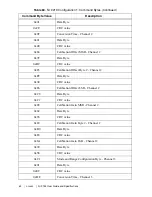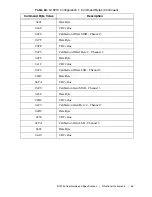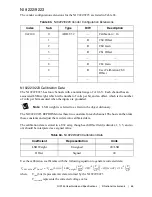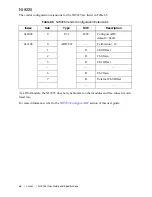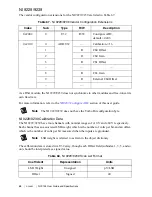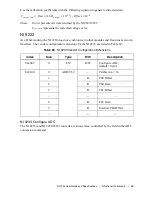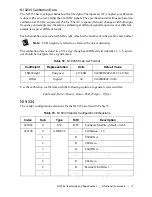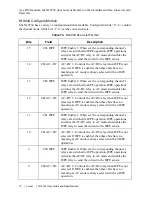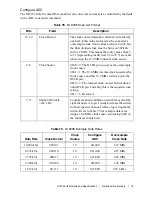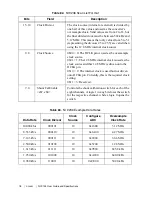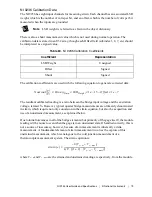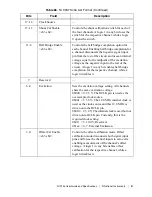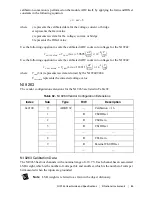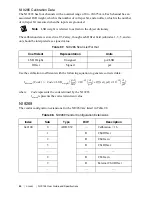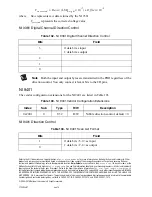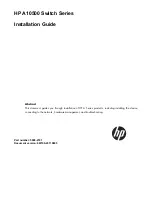
76
|
ni.com
|
NI 9144 User Guide and Specifications
NI 9235 Calibration Data
The NI 9235 has eight input channels for measuring strain. Each channel has an associated LSB
weight, which is the number of volts per bit, and an offset, which is the number of volts per bit
measured when the inputs are grounded.
Note
LSB weight is referred to as Gain in the object dictionary.
There is also a shunt measurement value which is not used during normal operation. The
calibration data is stored in an U32 array, though each Offset field (subindex 1, 4, 7, etc.) should
be interpreted as a signed value.
The calibration coefficients are used with the following equation to generate corrected data:
The resultant calibrated reading is a ratio between the bridge input voltage and the excitation
voltage, termed V
r
. However, typical quarter bridge measurements are denominated in strain,
which require not only conversion in the strain equation, but also the acquisition and use of an
unstrained measurement.
Due to initial tolerances in all of the bridge elements (but primarily of the gage itself), the module
reading is nonzero even when the gage is in an unstrained state. If handled correctly, this is not
a source of inaccuracy, because strain measurement is inherently a delta measurement.
Accordingly, a fundamental element of strain measurement involves the capture of this
1.250 kS/s
101000
10
0xA200
640.0 kHz
0.980 kS/s
110011
10
0xCE00
502.0 kHz
Table 80.
NI 9235 Calibration Coefficients
Coefficient
Representation
LSB Weight
Unsigned
Offset
Signed
Shunt
Signed
Table 79.
NI 9235 Example Data Rates
Data Rate
Clock Divisor
Clock
Source
Configure
ADC
Oversample
Clock Rate
Nominal
V
V
---
BinaryData LSBWeight
×
1
e
13
–
Offset
1
e
7
–
×
–
×
=

